Min Read
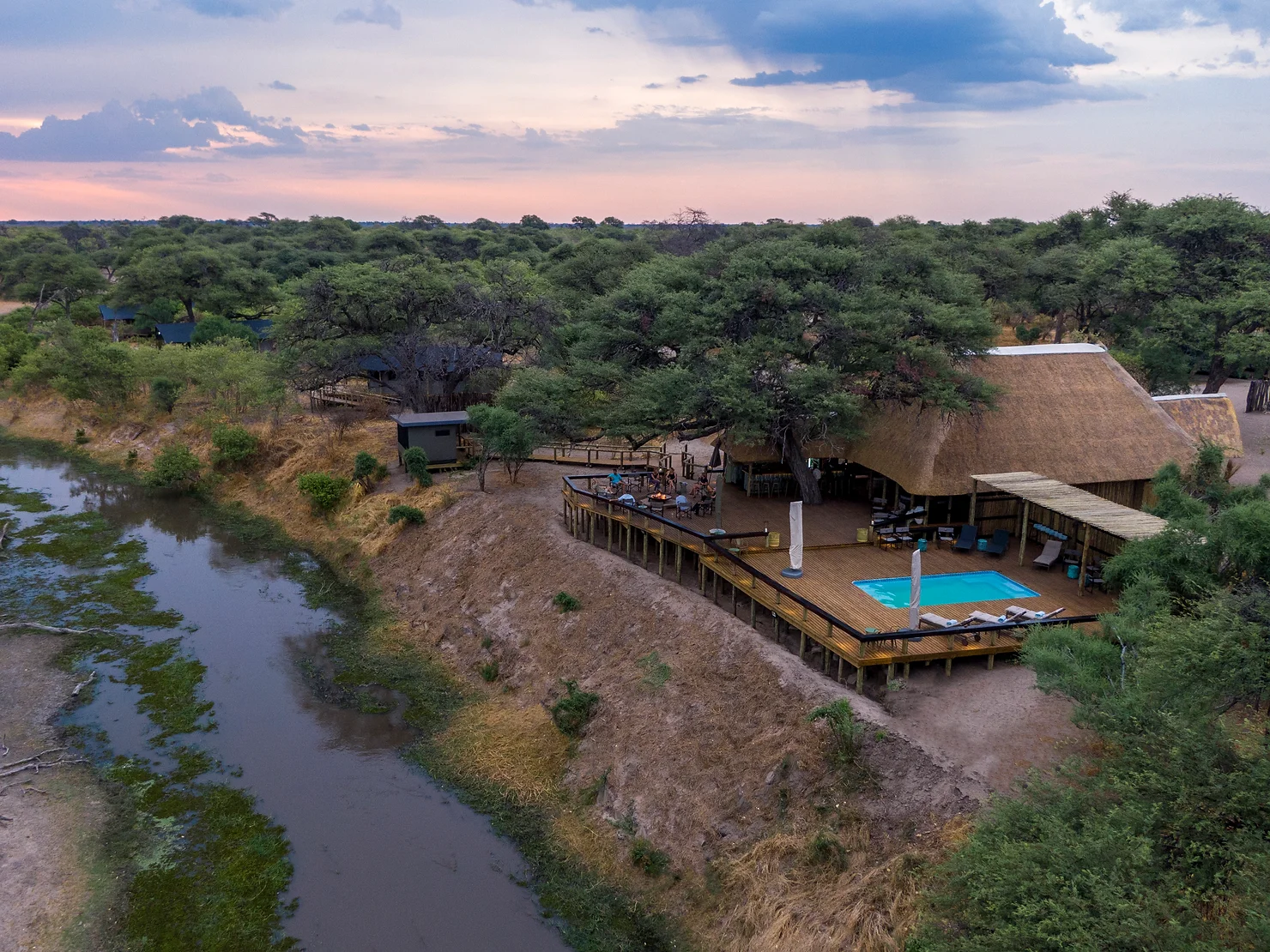
Words by Written by: Kim Sparrow
Images: Kevin Le Trench
Botswana is defined by two distinct yet vastly disparate landscapes – the Okavango Delta and the Kalahari Desert. The Kalahari is 900 000 km sq of undulating sands and semi-arid terrain; a seemingly inhospitable environment for communities and wildlife. However, in the resilient and adaptive manner of the wild, a thriving ecosystem exists. Through extreme temperatures and arid landscapes, nature has found a way to survive.
In winter, nights can drop to as low as minus 15 degrees Celsius and rise to 45 degrees Celsius during the summer. The Kalahari covers most of Botswana, spreading into neighboring South Africa and Namibia as well. The name ‘Kalahari’ is derived from its Tswana origin, meaning ‘waterless place’. Hence the importance of its water sources, from the Okavango Delta and beyond.
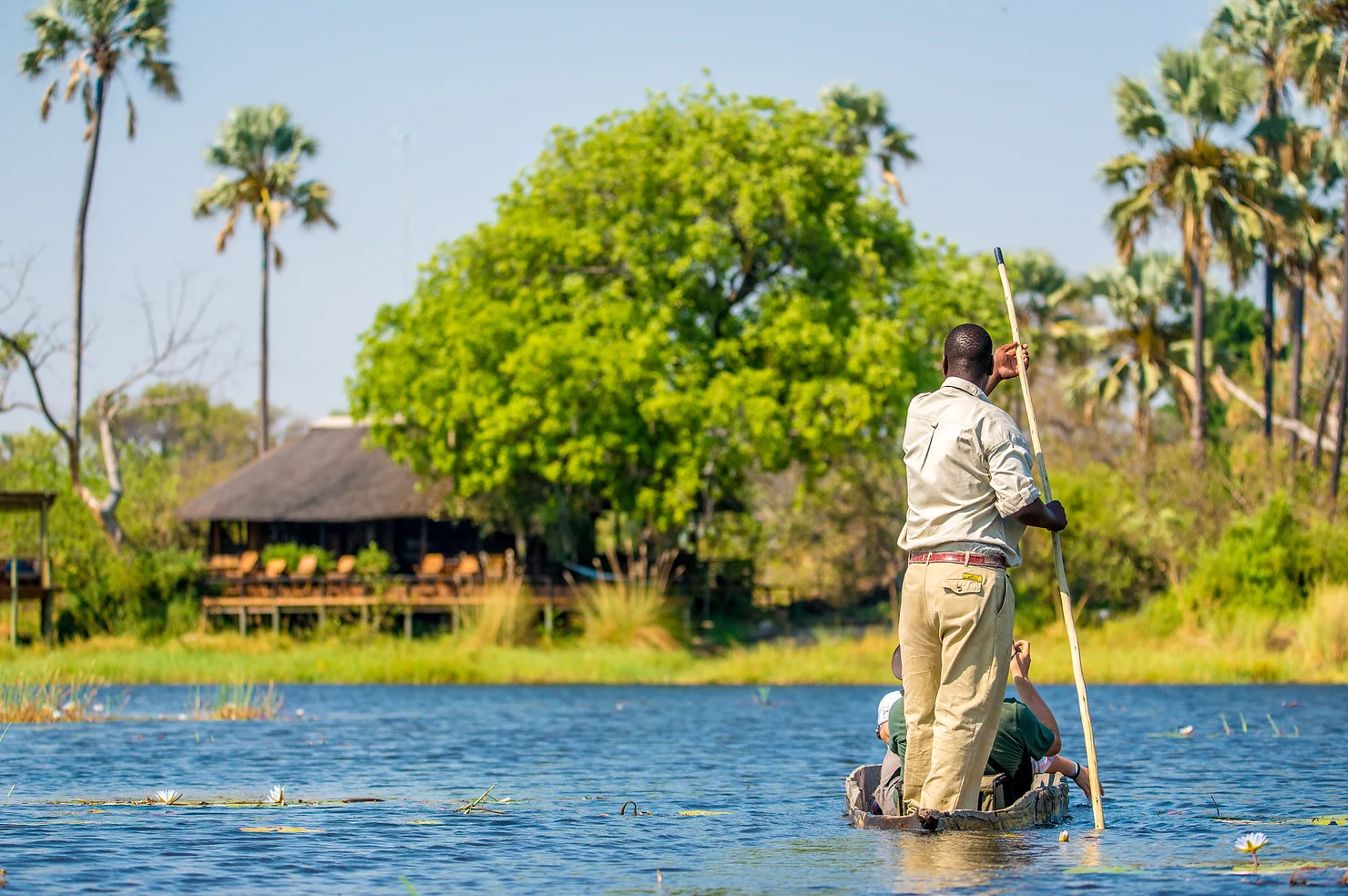
The Okavango Delta represents and preserves the heart of Africa’s finest game viewing, richly diverse in ecology and wildlife. Its landscape is shaped by water, and a vast variety of plant and animal species exist with seasonal ebbs and flows. Botswana is dry, being mostly occupied by the Kalahari desert, making the waters of the Okavango a life source for both humans and wildlife. The yearly floods are a much-anticipated key to survival, arriving from its source in Angola having flowed through Namibia and eventually settling in Botswana to form the delta. This floodwater creates a variety of habitats; islands, forests, marshes, lagoons, woodlands, and floodplains. This ‘liquid gift’ is the life source for wildlife as well as human settlements along the way.
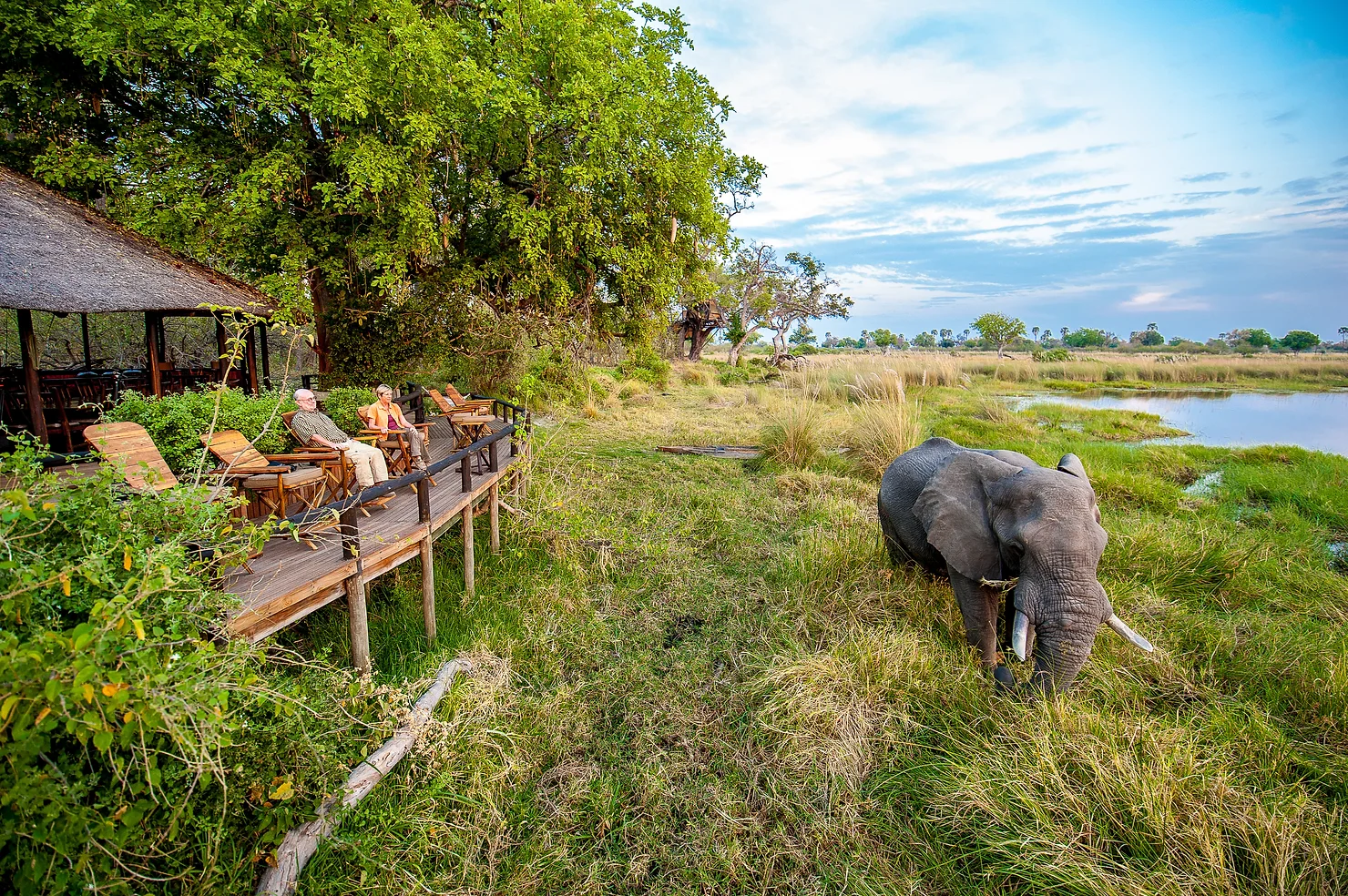
Discover the untamed Okavango Delta
The delta is a wilderness ecosystem at its best. Such diversity attracts a wealth of life, from insects to reptiles, fish, birds, and mammals. It is one of the few inland water deltas in the world, nourishing expansive wildlife populations which depend upon its tapestry of land and water. Not only is it the life source for animals, but the area connects ancient migratory corridors which allow wildlife to move freely in search of food and water, depending on the season. Supporting the world’s largest population of elephants, as well as other prime mammals such as lion, leopard, cheetah, and the endangered rhino, it is an undeniable species stronghold; a safari seeker’s dream destination.
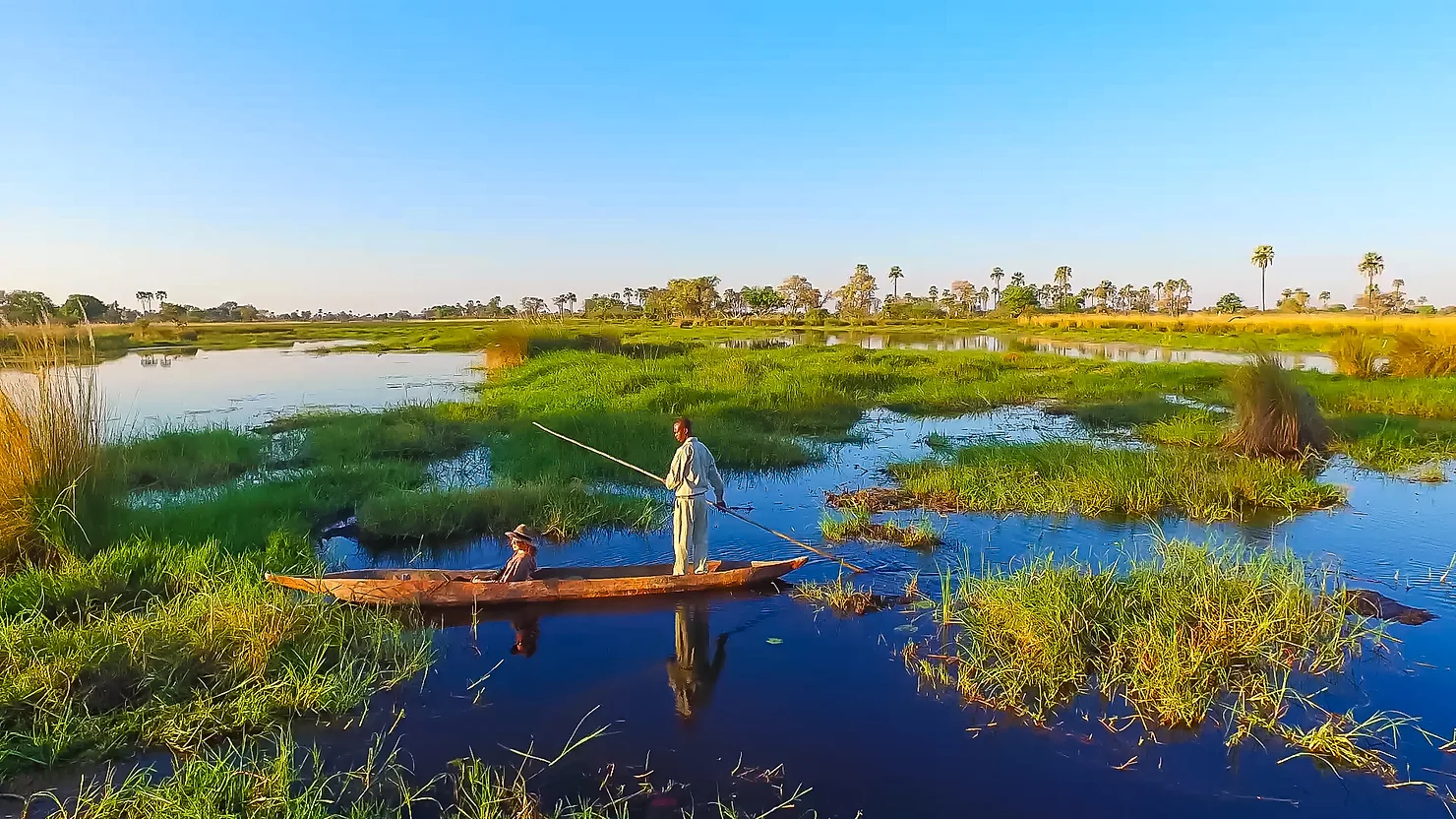
Where to stay to experience the delta at its untamed best? Delta Camp comes recommended by Jenman Safaris, located on a palm-studded island deep in the Okavango Delta. Delta Camp is a dream for guests in pursuit of experiencing the essence of nature and the deep Okavango, with chalets designed to take advantage of the many indigenous, old-growth trees of the island forest. The buildings blend ceremoniously into their surroundings, meaning that sometimes a tree grows through a roof or a floor, and you will find no glass in the windows and it very often means that the building itself is elevated onto a deck. If it’s bush and floodplains you are after – Delta Camp receives our nod.
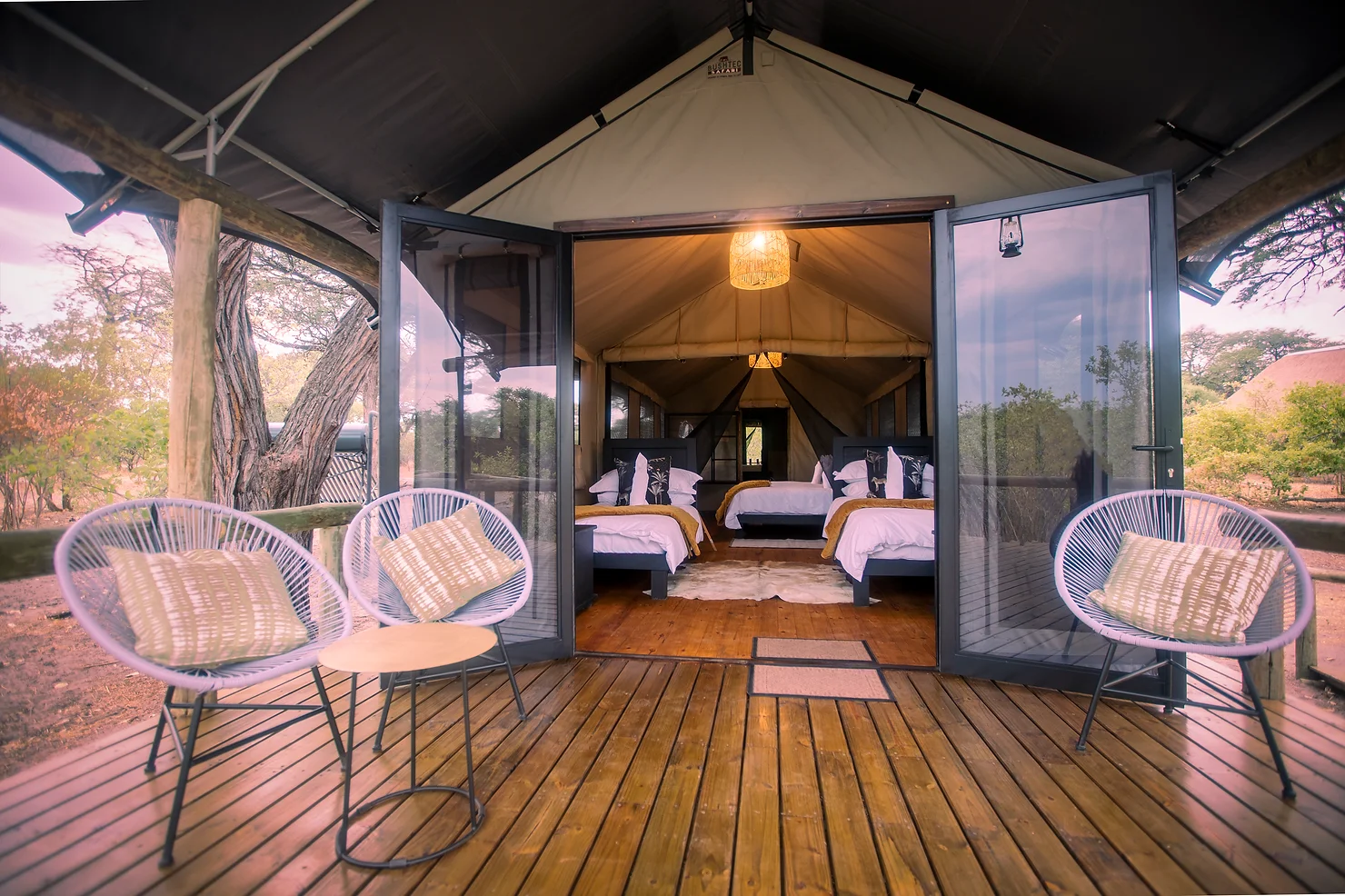
Explore the dramatic Khwai River at Mohotlho
The Khwai River is an extension of the Okavango Delta, maintaining its wild essence and biodiversity. Situated between Chobe National Park and Moremi National Park, the area is an ecological pearl; abundant in abundance. Moremi is the oldest and first protected area of the Okavango Delta and has some of the highest concentrations of wildlife in Africa. Its area is made up of floodplains, lagoons, acacia forests, mopane woodland, and islands. The biodiversity of these areas deems Moremi a safari seekers’ dreamscape, each terrain holding its own ecological wonders. It covers much of the eastern side of the delta and combines permanent water with drier areas, which creates some startling and unexpected visual contrasts, as well as the diversity of species. Being on the border of such diversity as well as sharing ancient animal corridors, the Khwai supports and celebrates its ecologically distinct neighbor.
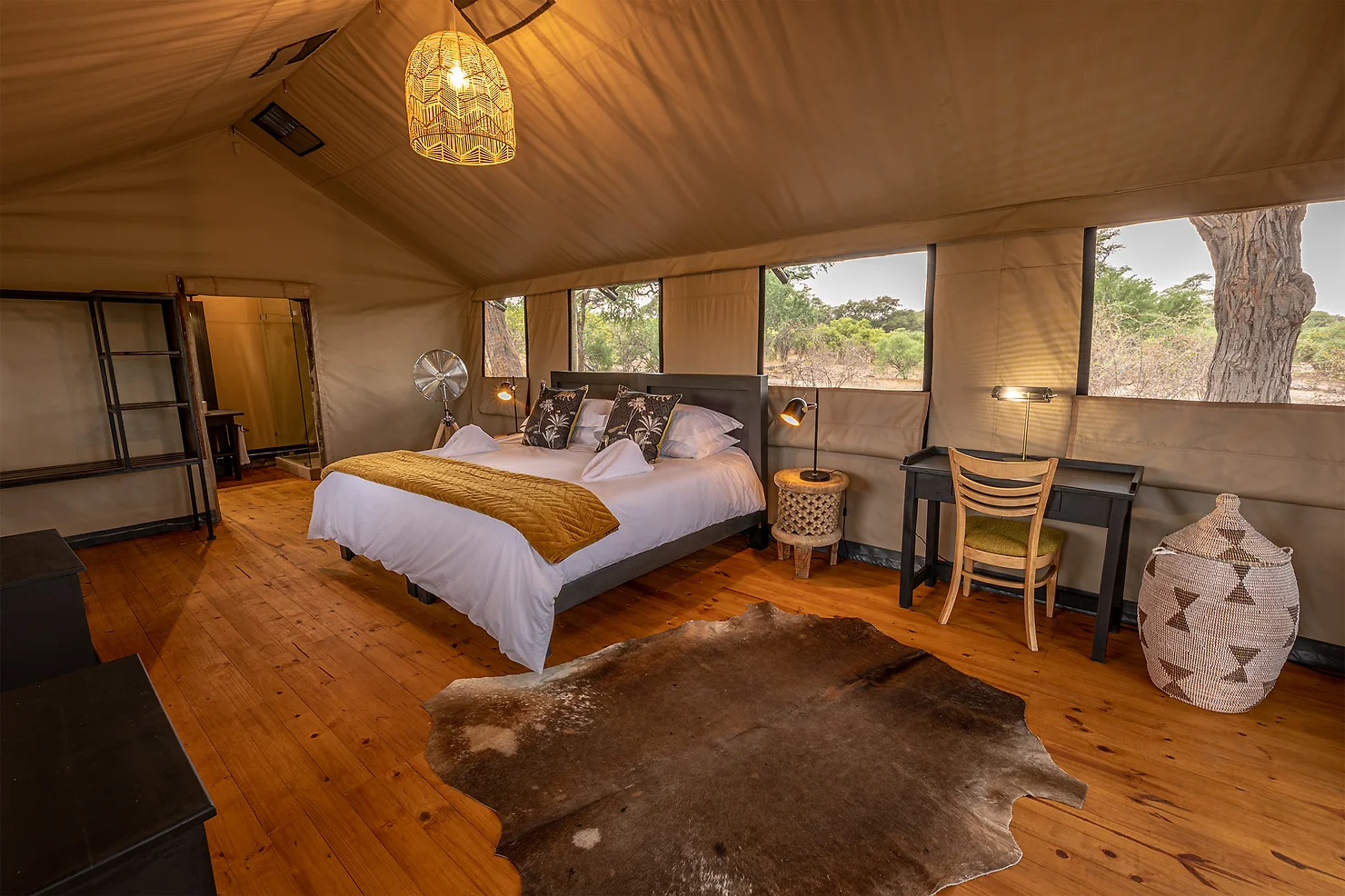
Amongst this myriad of ecosystems within the delta, the Khwai River is one of the most dramatic. As the season changes and the African heat rises, depleting water and food sources, the Khwai becomes a lifeline for wildlife. The water from the delta has pushed as far up the Khwai channel as it will go for the season, animals congregating along its river banks to quench their thirst.
The Khwai is dependent on the northern overflow of the Okavango Delta’s floodwaters and continues to fill as the dry season extends. It is this natural phenomenon and reliable water deposit which attracts wildlife to the area, a literal oasis in the desert of Botswana. The area is characteristic of the Okavango in its teems of wildlife, herds of zebra, lechwe, wildebeest, buffalo and elephant drawn to the Khwai River bank. With such bountiful numbers of prey, the predator population equally thrives, following in the footsteps of their next meal.
Mogotlho on the Khwai River is a luxury tented camp built off-grid, and seamlessly blending into the banks of the Khwai River. Guests will be thrilled to note just how much they can immerse themselves in an African safari experience, guided and hosted by Mogotlho’s passionate team made up of residents from nearby villages. Each of the 13 spacious and luxurious tents, has been intimately placed to ensure unspoiled panoramic views of the African bush, with a touch of class and plenty of privacy. Offering a unique view of the river, a life source, and a watering hole for wildlife, you will have ample opportunity to observe wildlife in its element and the ever-changing landscape from the privacy of your balcony.
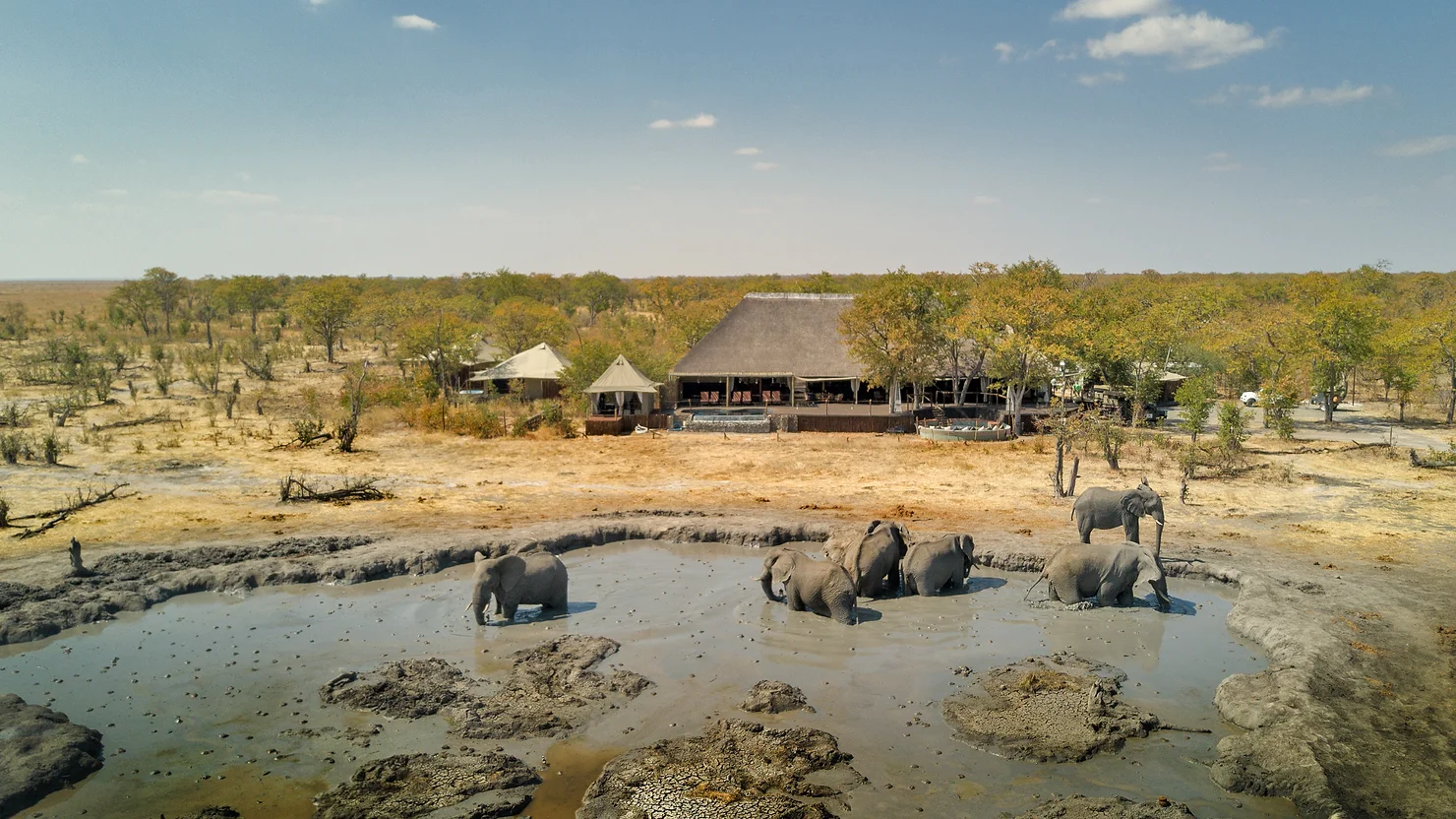
Camp Kazuma for game viewing on the Chobe
Last but most certainly not least, located in northern Chobe National Park, the Chobe River is the life support of the area. Also known as the ‘river with many names’, Chobe’s waters sustain life beyond Botswana’s borders. Originating in Angola, it travels through Namibia’s Caprivi region where it is known as the Kwando, into Botswana where it is first called the Linyanti, diverting east to become the Chobe in the Kazungula area where it flows forth towards Victoria Falls, turning into the mighty Zambezi. Eventually, it reaches the sea.
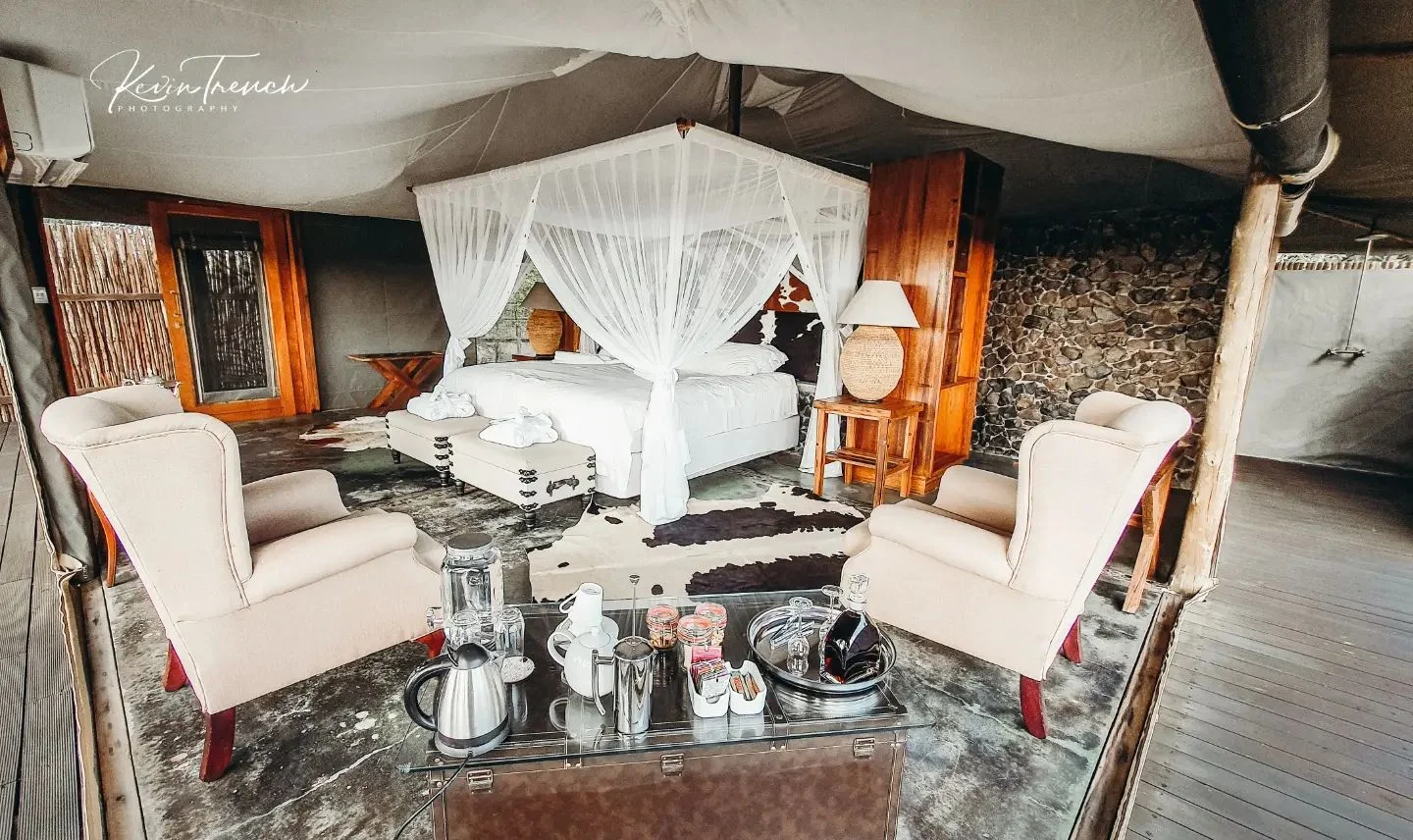
The river forms a natural boundary between Botswana and Namibia, a platform for tourism, transport and trade as well as a bountiful and busy wildlife intersection. With ancient migratory routes between the Moremi Game Reserve, Okavango Delta and Hwange National Park in Zimbabwe, its presence is crucial for wildlife, especially during the dry season. The amount of life that the Chobe supports, from communities to conservation areas, is worthy of accolades within the wilderness.
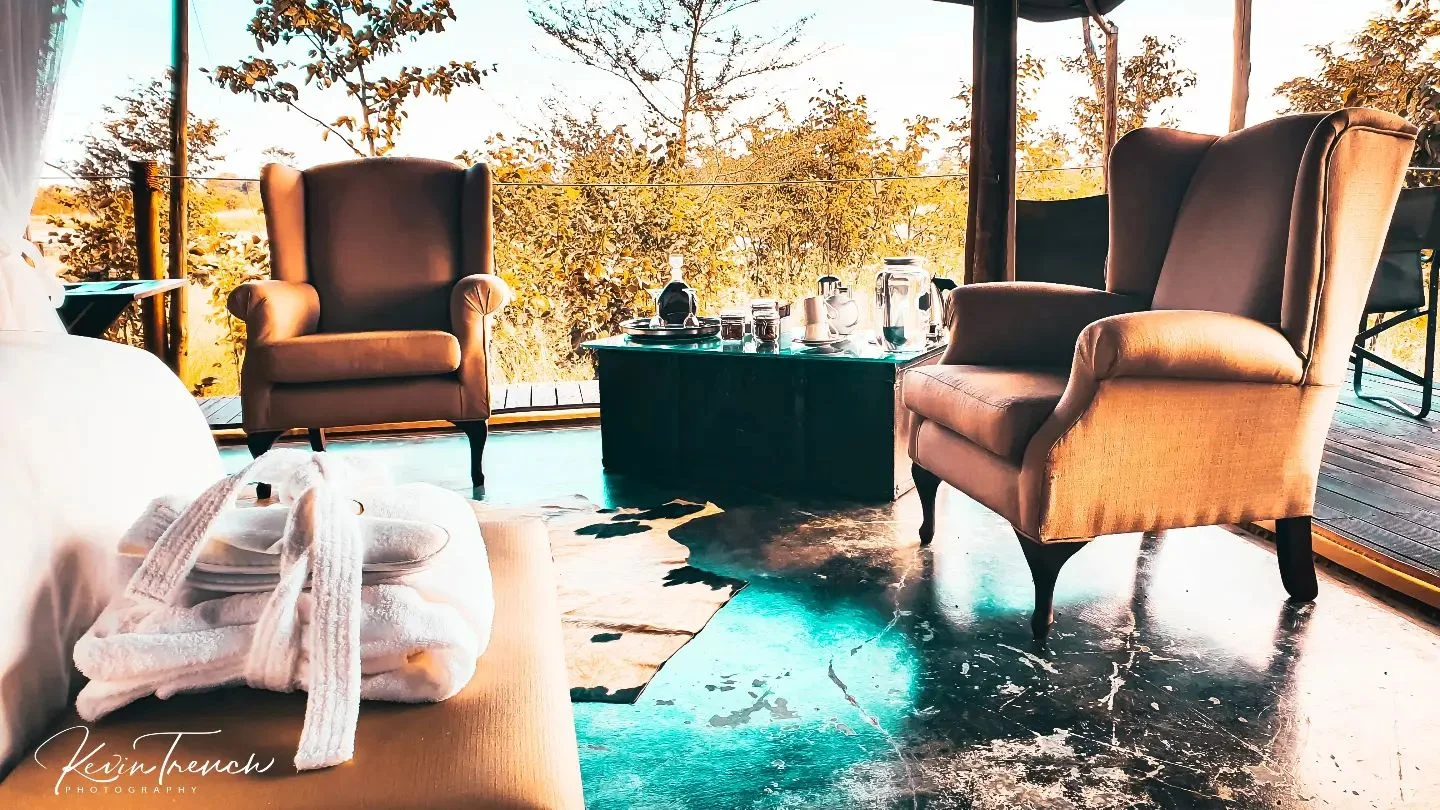
The volume of animal traffic which depends on the Chobe River is nothing short of astounding. Supporting the largest elephant population in the world, the national park feeds and waters approximately 120 000 African giants, reliant on the Chobe River. In addition to being an elephant Eden, the area is also home to wild dog, leopard, giraffe, buffalo, lion, puku and more – as well as a healthy and varied population of birdlife. These resources make Chobe one of the most important wildlife areas in Botswana, beyond the Okavango Delta.
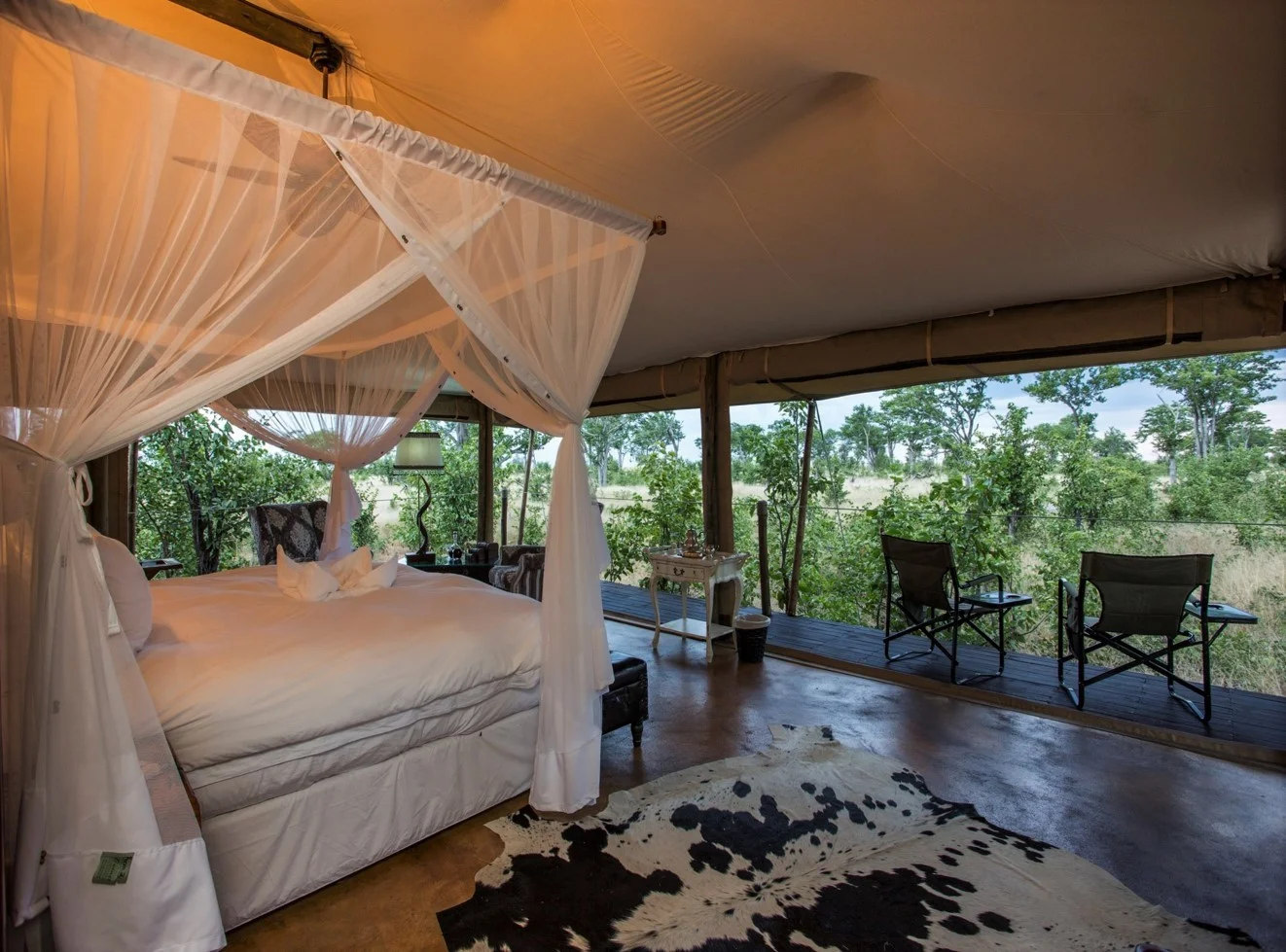
Camp Kuzuma, a boutique eco-lodge in Botswana bordering Chobe National Park and Hwange National Park will host you, located in exceptional safari area teeming with wildlife that inhabit this busy wildlife corridor. The seven well-appointed tents are incredibly spacious, boasting deep Victorian baths and king-sized beds draped in mosquito nets, there is a true commitment to eco-tourism, as the camp is completely off the grid yet offers all the comforts guests may desire on their Botswana Safari Experience.
The attraction of Botswana is endless….
In a national park, water is life, and each ecosystem is directly dependent on its availability. This truth resonates even more so in a country covered by desert. Through rainy seasons, natural springs, lakes, and rivers, its presence is vital to the existence of nature. Its ebbs and flows during each season shape our landscapes, sustaining both our plants and animals. Without water, our wild spaces would cease to exist. Botswana and its landscapes are a testament to this, its rivers are imperative for survival.
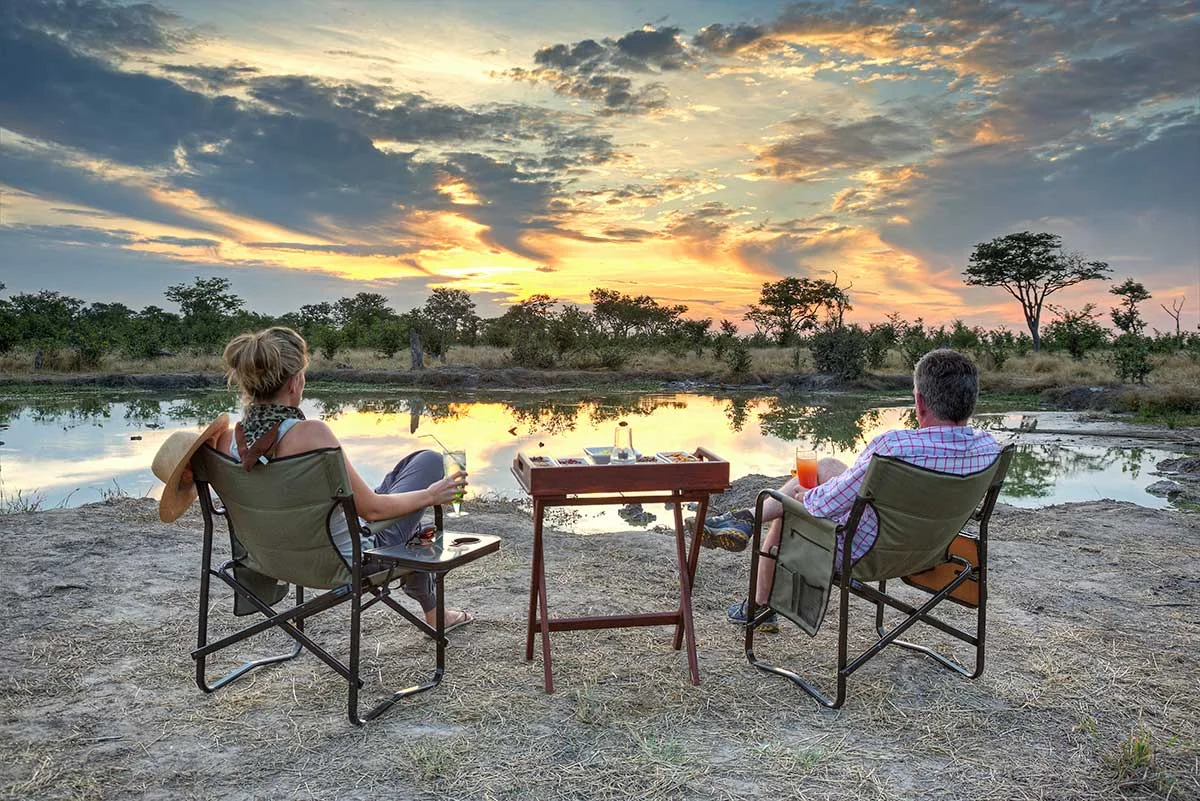
The attraction of Botswana is endless, from its vast and varied landscapes to its wildlife heritage and wild waterways. As an unparalleled ecological haven, it draws safari aficionados, conservationists and travellers from near and far to drink from the well of the Botswana wilderness.
Jenman African Safaris
Email: [email protected]
Phone: +27 21 683 7826